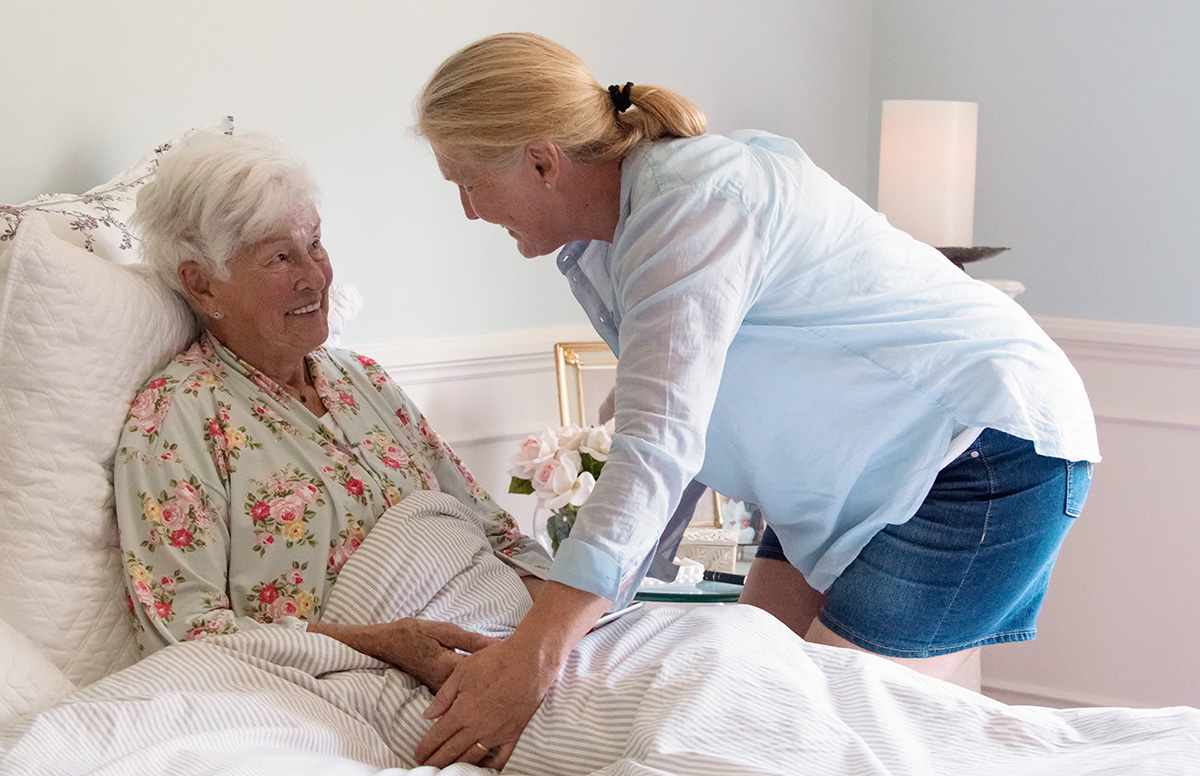Like the rest of the aging services field, hospice providers continue to grapple with staffing shortages. But because of their community volunteer requirements, some hospice providers may face an additional human-resource challenge after January 11.
That’s when the Public Health Emergency (PHE) instituted in early 2020 by the Department of Health and Human Services (HHS) may end, if HHS does not renew it. When the PHE ends, so will the COVID waiver that suspended the hospice volunteer rule–which requires volunteer hours to equal or exceed 5% of the total patient care hours of all paid hospice employees and contract staff. LeadingAge expects the fate of the PHE to be announced by November 11, and has asked CMS to allow a grace period and issue guidance to surveyors.
Some LeadingAge-member hospice providers, many of whom saw a reduction in volunteers during the pandemic, may find themselves struggling to boost their volunteer hours to comply with the 5% requirement when the PHE ends.
Mount Carmel Hospice, a part of Trinity Health in Columbus, OH, leaves no stone unturned in recruiting volunteers. Volunteer Coordinator Daniel Riquino uses online volunteer-engagement organizations such as VolunteerMatch and Points of Light, both national, and local examples such as Get Connected Ohio and LoveCbus.
“I have [also] used our organization’s social media to share volunteer stories,” Riquino says, “and always end every story with a call to action letting people know how to contact us if they are interested in volunteering.”
Mount Carmel Hospice recruits from churches and community centers, but also contacts local colleges and universities, especially those with nursing or other medical programs. Students often have volunteerism requirements in the courses of study, or will want volunteer hours to help with future medical school applications. Riquino works with the schools’ staff to reach students, and also uses flyers on campus.
“If I had one piece of advice,” Riquino says, “it would be to get rid of any preconceived ideas of what a ‘good’ or ‘perfect’ hospice volunteer is, and start saying ‘Yes.’”
The organization uses Teaching Transitions as an online training tool to accommodate different volunteers’ schedules, and Riquino works to individualize orientations as much as possible. He eschews the traditional approach of holding only a few group meetings each year, instead offering individual orientations that are responsive to each potential volunteer’s schedule. “If this means I have to come in on the weekend, I come in on the weekend. If it means I have to stay late in the evening, I do so,” he says. “Scheduling should not be a barrier to an individual wanting to become a hospice volunteer.”
During the pandemic, Mount Carmel, like many hospice providers, experienced a decline in volunteer activity due to fears of COVID-19 or vaccination requirements. By September 2021, Mount Carmel Hospice had 15 volunteers, a significant drop from 80 at the pandemic’s start. The current volunteer count is 60 and, says Riquino, is continuing to grow. Its volunteer hours percentage, once 0.29%, has bounced back above 5%.
Colleges and universities are also a promising source of volunteers for First Choice Home Health & Hospice, a joint venture created by three LeadingAge-member life plan communities in the Harrisonburg, VA area. Residents of those LPCs–Virginia Mennonite Retirement Community, Bridgewater Retirement Community, and Sunnyside–once constituted the bulk of the volunteers, but during the worst of the pandemic, First Choice had to go a full year without volunteers.
“Even after patients allowed us to come [back] into their homes, they would let nurses in but no chaplains or volunteers,” says Donna Selby, administrator of First Choice. “Once that started easing, we started ramping it up and we have greater than 5% [hours] now.” Selby says she is now recruiting successfully among students in social work and other health or human-services programs.

 Shutdown Week Three: Impact of Ongoing Closure on Affordable Housing
Shutdown Week Three: Impact of Ongoing Closure on Affordable Housing


